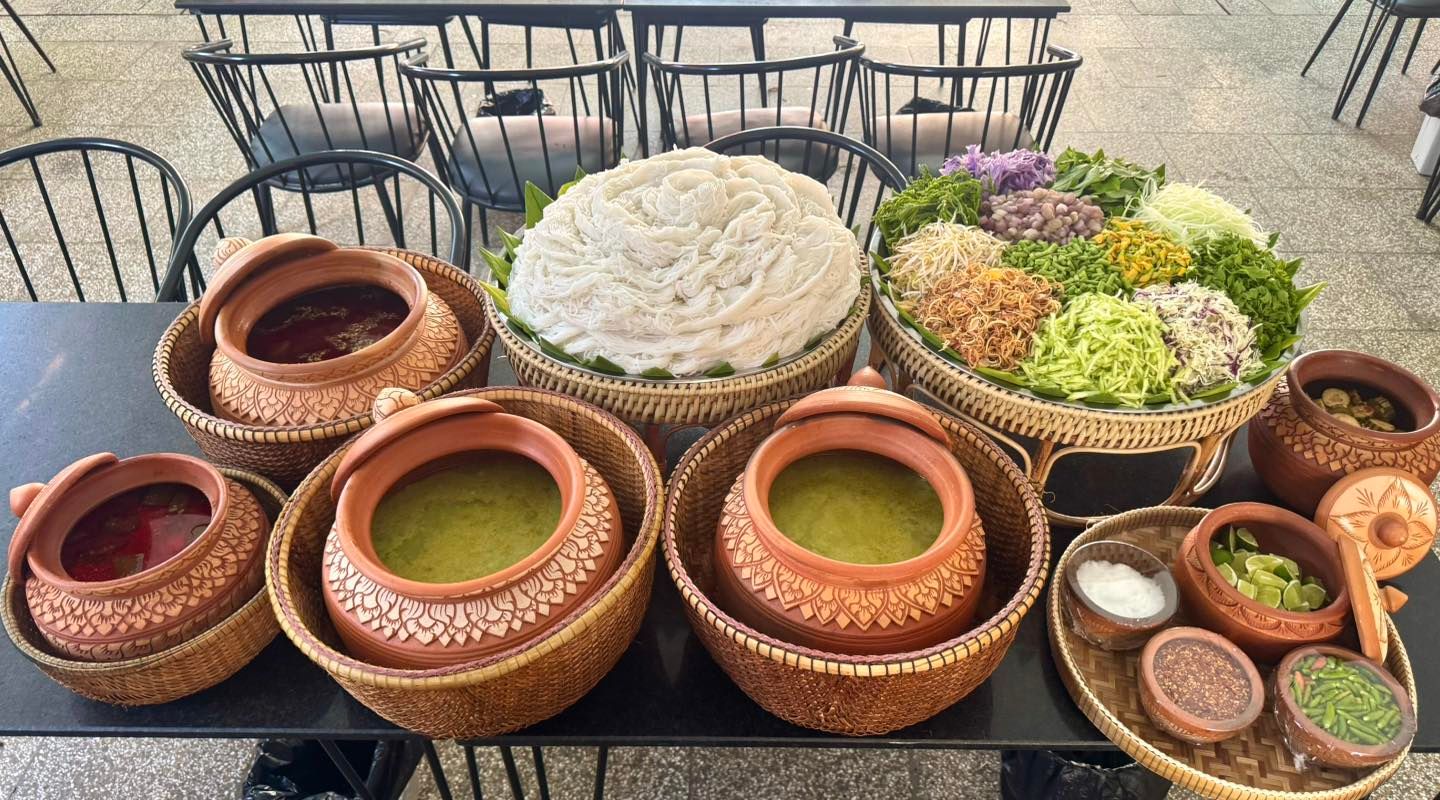
Phnom Penh, Cambodia — On a quiet street corner or in the early-morning clamor of a bustling wet market, the unmistakable aroma of lemongrass, turmeric, and fresh herbs floats through the air. Nestled in banana leaves or ladled into chipped porcelain bowls, a humble yet deeply cherished dish makes its appearance: Nom Banhjok, Cambodia’s beloved rice noodle.
More than just a meal, Nom Banhjok is woven into the fabric of daily life. Its name, when translated literally, means “food (noodle) for feeding each other”—a phrase that reveals both its essence and its emotional weight in Khmer culture. It’s a dish rooted in community, sharing, and history—passed from generation to generation, often served in silence and smiles between friends, neighbors, and families.
While pho, ramen, and pad thai have taken the global spotlight, Cambodia’s Nom Banhjok remains a lesser-known treasure—perhaps the world’s next favorite noodle dish waiting to be discovered.
 A Dish, a Ritual, a Memory
At its core, Nom Banhjok consists of silky, hand-pressed rice noodles made fresh each morning. These noodles are gently placed in wide bowls and topped with either of two signature broths: the Khmer green fish soup (samlor proher), light and herbaceous with lemongrass, turmeric, fingerroot, and kaffir lime; or the Khmer red curry soup, rich and savory, made from coconut milk, chili, and kroeung—a traditional Cambodian spice paste.
A Dish, a Ritual, a Memory
At its core, Nom Banhjok consists of silky, hand-pressed rice noodles made fresh each morning. These noodles are gently placed in wide bowls and topped with either of two signature broths: the Khmer green fish soup (samlor proher), light and herbaceous with lemongrass, turmeric, fingerroot, and kaffir lime; or the Khmer red curry soup, rich and savory, made from coconut milk, chili, and kroeung—a traditional Cambodian spice paste.
Toppings often include fresh banana flower shavings, cucumber, long beans, bean sprouts, and fragrant herbs such as mint and basil. The final flourish? A spoonful of fermented fish paste or a squeeze of lime to deepen the flavor.
What distinguishes Nom Banhjok from other Southeast Asian noodle dishes is not just its flavor profile but its role in Cambodian identity. Often eaten for breakfast, it's a staple at religious gatherings, family reunions, and weddings. On festival mornings, entire villages can be seen preparing massive batches, ladling soup into bowls for Buddhist monks and neighbors alike.
A Legacy of Resilience and Simplicity
According to culinary historian Sokneang Meas, Nom Banhjok has existed in various forms for centuries, with some references appearing in inscriptions as early as the Angkorian period.
“The dish is not only about nourishment,” Meas explains. “It’s about harmony. In Khmer tradition, when we say we eat Nom Banhjok, we imply we're feeding each other. It’s not a solo experience—it’s meant to be shared.”
Though simple, the process of making the noodles is intricate. Rice must be soaked, ground, fermented slightly, then pressed through a wooden or metal sieve into boiling water—transforming into long, chewy strands that carry the soul of the dish.

The Modern Renaissance
In recent years, a new wave of Cambodian chefs, both domestic and diaspora, have begun showcasing Nom Banhjok to international palates. Pop-up restaurants in Paris, Long Beach, and Melbourne now serve elevated versions, adding grilled prawns, soft-boiled eggs, or even vegan twists on the traditional soup base.
At Phnom Penh’s weekend markets, younger generations blend tradition with trend, serving Nom Banhjok in compostable cups with QR codes linking to its history, inviting locals and tourists alike to learn while they eat.

A Noodle for the World
Could Nom Banhjok be the next global noodle phenomenon? Its time may be near.
Unlike the rich heaviness of some noodle dishes, Nom Banhjok offers balance—flavorful but refreshing, deeply rooted yet adaptable. Its symbolic meaning of togetherness and care feels especially timely in a fragmented world.
Whether eaten in a bamboo hut in Siem Reap or at a food stall on a busy Phnom Penh boulevard, Nom Banhjok carries the same message: we eat better when we eat together.